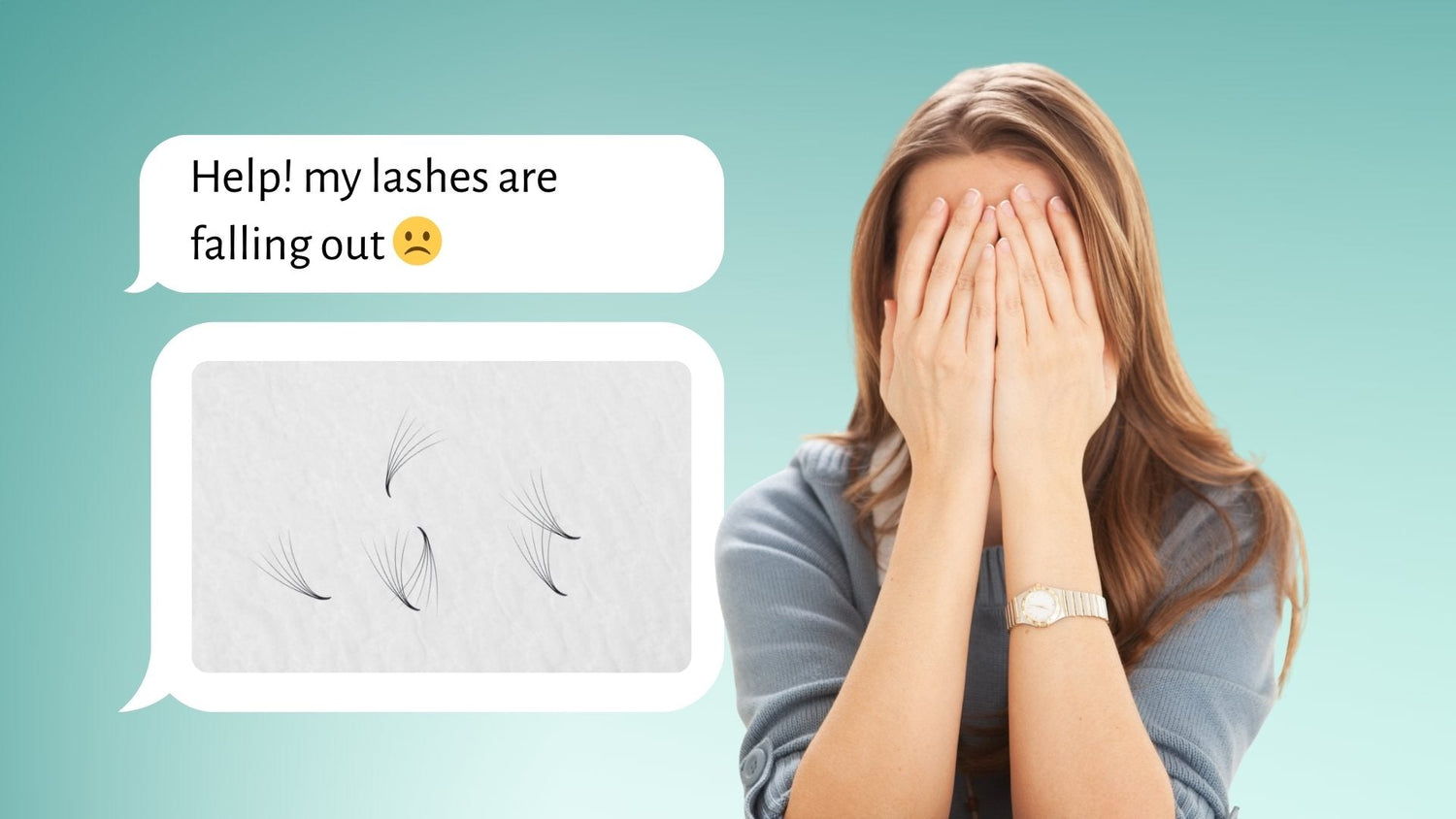You just nailed a perfect set. Retention was on point. The client walked out smiling.
A week later:
“Hey… my lashes are falling out way faster than normal!”
Cue the internal scream.
Relax. It’s not your glue, not your technique, and not your fault.
It’s seasonal lash shedding.
It happens like clockwork in autumn and spring, and while it’s completely normal, it still sends clients into panic mode if they don’t know what’s going on.
Here’s how to explain it, know what’s normal (and what’s not), and handle those awkward messages like a pro.
Table of Contents
- 1. What Is Seasonal Lash Shedding?
- 2. What Causes Seasonal Lash Shedding?
- 3. How to Tell Normal Shedding From a Problem
- 4. How to Prepare Clients for Shedding Season
- 5. What to Do When Clients Bring It Up
- Conclusion: Don’t Panic — Just Prepare
1. What Is Seasonal Lash Shedding?
Seasonal lash shedding happens when your client naturally loses more lashes than usual, often in spring and autumn. It typically lasts around 4–6 weeks and lines up with changes in the body’s natural lash cycle.

Shedding kicks in when more lashes than usual move into the telogen phase at once
2. What Causes Seasonal Lash Shedding?
There’s no single explanation, but most lash pros agree on a few key triggers:
- Environmental changes: Fluctuations in temperature, humidity, and allergens (like pollen).
- Light & hormonal shifts: Similar to how some people shed more scalp hair during seasonal transitions.
- Lash growth cycles: More lashes hitting the telogen (resting) phase together.
Think of it like how pets shed more fur in certain seasons. Same biological process, just lash-sized.
3. How to Tell Normal Seasonal Shedding From a Problem
Not all lash loss is harmless. Here’s how to tell whether it’s just shedding or something more.

✅ Normal Seasonal Shedding:
- Gradual lash loss over several weeks
- 2–5 lashes shedding per day (can be more during peak)
- Visible baby lashes (new growth)
- Extensions fall out attached to natural lash (look for tiny bulb at base)
- Healthy lash line, no redness or irritation
❌ Potential Red Flags:
- Sudden lash loss in clumps
- No new growth coming through
- Extensions falling off without a natural lash
- Redness, swelling, or itchiness
- Blunt or “cut” lash tips (signs of breakage)
- Heavy shedding that lasts longer than 6 weeks
4. How to Prepare Clients for Shedding Season
The best way to avoid panic is to talk about it before they even notice.
- Normalize it: “Just like we shed more head hair in certain seasons, lashes go through a similar cycle.”
- Set expectations: Sets might not feel as full, and infills might be needed a bit sooner.
- Keep it reassuring: It’s temporary and nothing to stress about.
This is a conversation worth having with every client during autumn and spring. Especially new ones who might not be familiar with shedding season. Mention it at the end of their appointment so they walk away informed and calm.
Example Script:
“Hey, just a quick heads-up. This time of year, you might notice a bit more lash shedding than usual. Totally normal and doesn’t last long. If you do notice it, we can just bring your next infill forward to keep everything looking full.”

Infills every 2–3 weeks help maintain fullness during shedding season
5. What to Do When Clients Bring It Up
If a client reaches out in panic, here’s your playbook:
- Reassure: “This is completely normal. It happens twice a year.”
- Educate: “Your natural lashes are just cycling. We’ll tweak your fills to keep your set fresh.”
- Adjust: Consider lighter sets or shorter lengths that won’t stress new growth.
- Remind: Reinforce aftercare: No rubbing, avoid oils, cleanse gently.
- Support: If there’s redness, irritation, or noticeable gaps in the lash line with no new growth, it’s best to suggest they check in with a doctor. Always better to be safe.
Optional Boost:
Consider recommending an extension friendly lash growth serum to help support strength and regrowth during this period.
Conclusion: Don’t Panic, Just Prepare
Seasonal shedding isn’t a retention crisis. It’s just biology doing its thing. When you explain it clearly and confidently, clients feel reassured, not rattled.
That trust keeps them loyal and your books full, even during shedding season.
Key Takeaways:
- Know what’s normal
- Spot the warning signs
- Set expectations before your clients panic
👉 Check out our other posts on retention and make sure you’re stocked up on aftercare essentials to guide clients through every season.





